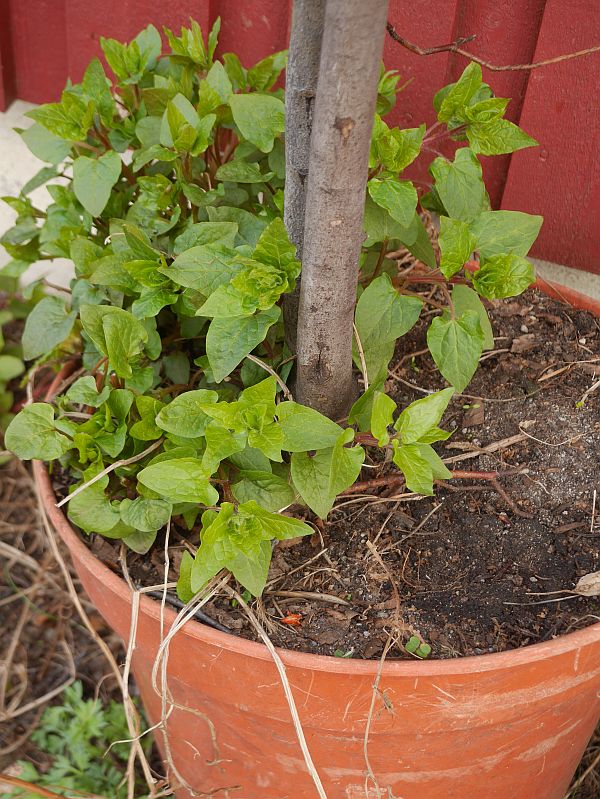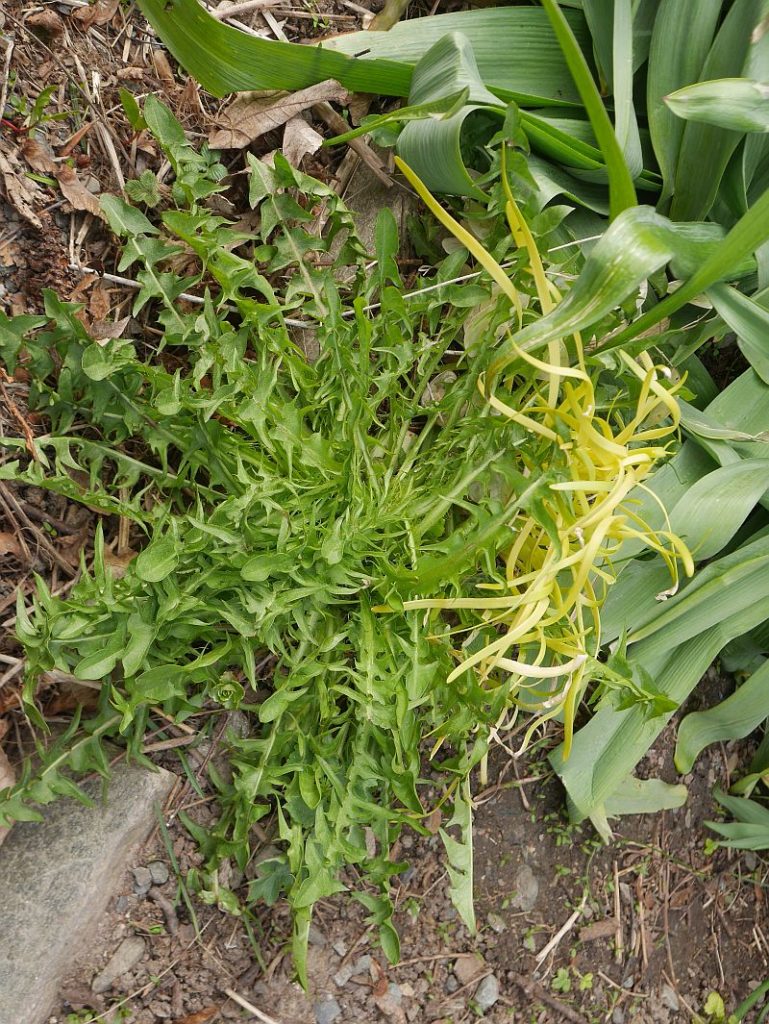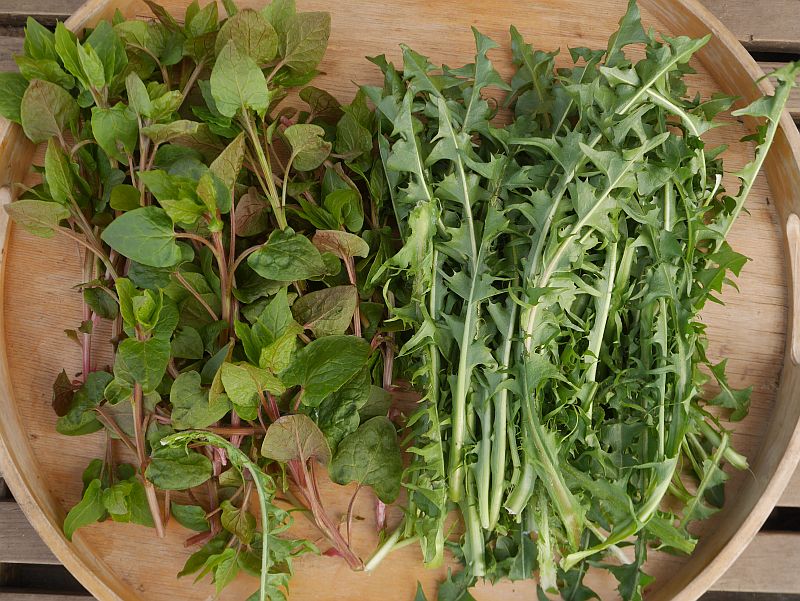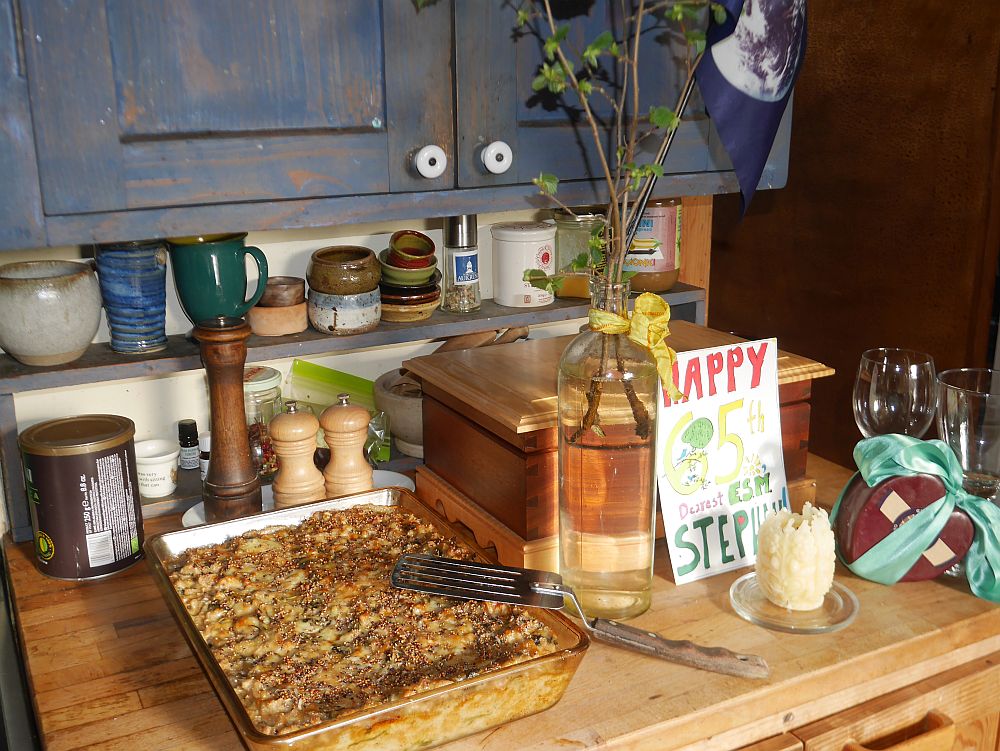A wonderful birthday dinner yesterday!
As is the tradition since I left home, my birthday dinner has been Macaroni Cheese with rhubarb crumble for dessert. Mac Cheese was the first veggie dish I ate back in the 60s – Mum took us to Edwin Jones in Southampton (the superstore of the time) where they served it in the restaurant. We loved it and it became a traditions for Mum to make this every Tuesday! Nowadays, we use whole grain spelt macaroni with masses of greens…Hablitzia or Caucasian spinach ( stjernemelde) and dandelion (løvetann). On the top, we used dried alpine bistort (harerug) bulbils!
This one time rhubarb crumble is the only time I eat sugar each year, something I’ve kept up now for the last 20 years.
Dedicating this to my dear Mum…it’s after all her 65th birth day too!
Monthly Archives: April 2020
Birthday excavations
Many thanks for all the birthday greetings yesterday!
Last year’s signature tune was When I’m 64 by the Beatles, but this year’s I’ve been looking forward to most. It’s a song recorded by my favourite singer/ songwriter Vin Garbutt on his album “Tossin’ a Wobbler” from 1978. It goes like this:
“A man of the earth, a man of the soil in his lonely allotment he labours and toils.
He’s not much to do since he turned 65.
So he took to his garden to keep him alive its his only joy and his pride.
Every day as I go through the old shanty town where the sheds and allotments all stand I see the old man of the land with a rake or a spade in his hand.
He’s there in all weather in sunshine or rain.”
Here’s a live recording: https://www.youtube.com/watch?v=GMrzhLedV1o
I even used to sing it (very badly) when I was young to the torment of my family! I recently discovered and bought a documentary about Garbutt (he died in 2017) and was pleasantly surprised to discover that he was a veggie gardener in real life (http://www.pancrack.tv/vin.html), I spent my birthday doing what I like best…digging…and completing about 30m of trench along the driveway and around the outhouse, the latter to eliminate the tree roots from a new garden area and along the whole length of the driveway, also to keep tree roots out of an area where I still grow annuals. It’s difficult on my shallow soil to get a balance and the trees I planted on my boundary over 30 years ago were taking over. I last dug up the 20-30m of the driveway by hand 34 years ago so that we could drive the car up to the house. I know as I have a picture somewhere of my wife pregnant with Hazel and Robin with a pile of stones. We’ve now gone full circle and we’re carless and the drive is back to being a footpath.
P.S: I’ve also become known as ESM: Extreme Subterranean Man
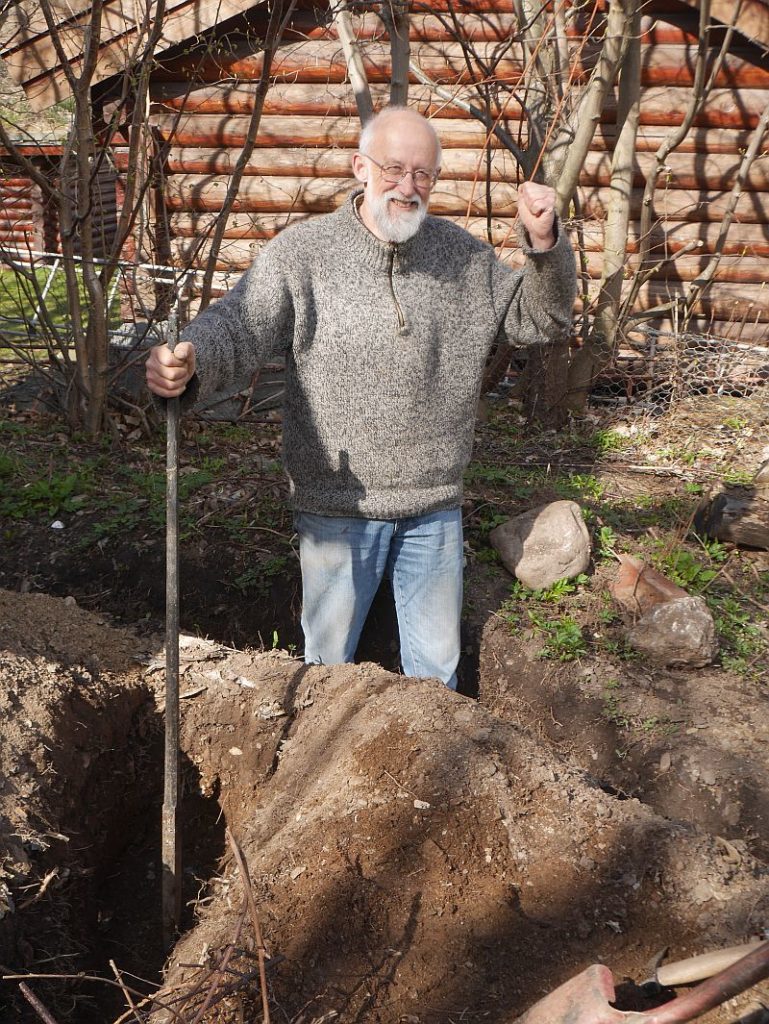

…and extending a bed around this birch tree with excess soil:
Quinoa greens
Tonight’s 22 greens from the garden with yacon used in a quinoa stir-fry (with garlic and chili in addition):
Brassica oleracea (perennial kale / flerårig kål)
Hydrophyllum virginianum (waterleaf, indian salad)
Tragopogon pratensis (Jack-go-to-bed-at-noon / geitskjegg)
Angelica spp. (kvann)
Allium carinatum
Allium ursinum (ramsons / ramsløk)
Primula elatior (oxlip / hagenøkleblom)
Hablitzia tamnoides (Caucasian spinach / stjernemelde)
Carum carvi (caraway / karve)
Myrrhis odorata (sweet cicely / spansk kjørvel)
Polymnia edulis (yacon)
Urtica dioica ( stinging nettle / brennesle)
Campanula latifolia (giant bellflower / storklokke)
Ficaria verna (lesser celandine / vårkål)
Rumex acetosa (sorrel / engsyre)
Dystaenia takesimana (giant Ulleung celery)
Hemerocallis spp. (day lily / daglilje)
Taraxacum spp. (dandelion / løvetann)
Rheum ribes
Armoracia rusticana (horseradish / pepperrot)
Allium nutans
Aegopodium podograria (ground elder / skvallerkål)

Close dunnock encounter
I’ve never been this close to a dunnock (jernspurv) before. They are normally really shy and although they sing every spring I have no sightings of young birds or nest. This one landed briefly on the balcony outside my home office, time enough for one photo!
More perennial vegetables for dinner!
A new collection of perennial vegetables from the garden on 25th April 2020, now back to cool, overcast weather. All are managed in some way.
Carum carvi (caraway / karve) greens
Urtica dioica (nettle / nesle)
Aegopodium podograria (ground elder / skvallerkål)
Allium fistulosum (Welsh onion /pipeløk)
Hablitzia tamnoides (Caucasian spinach / stjernemelde)
Campanula latifolia (giant bellflower / storklokke)
Myrrhis odorata (sweet cicely / spansk kjørvel)
Allium ursinum (ramsons / ramsløk)
Taraxacum spp. (dandelion / løvetann) 
Today’s perennial catch
23rd April 2020 perennial greens used in a delicious quiche (eggepai):
Hablitzia tamnoides (Caucasian spinach / stjernemelde)
Myrrhis odorata (sweet cicely / spansk kjørvel)
Rumex acetosa (sorrel / engsyre)
Campanula latifolia (giant bellflower / storklokke)
Urtica dioica (stinging nettle / brennesle)
Allium senescens
Heracleum sphondylium (common hogweed / kystbjørnekjeks)
Aegopodium podograria (ground elder / skvallerkål)
Brimstone butterfly and moth
Brimstone butterflies (sitronsommerfugl) have become much more common on the other side of the fjord in recent years and I saw one in the garden for the first time in 2009. I thought this would be a regular occurrence but it took another 11 years before the next one turned up yesterday feeding on lesser celandine (vårkål) in my forest garden.
This reminded me that I’ve also recorded the brimstone moth (sitronmåler) here, in my living room on 25th January 2014!
31st May 2020: A second one turned up, on Lunaria annua (honesty)
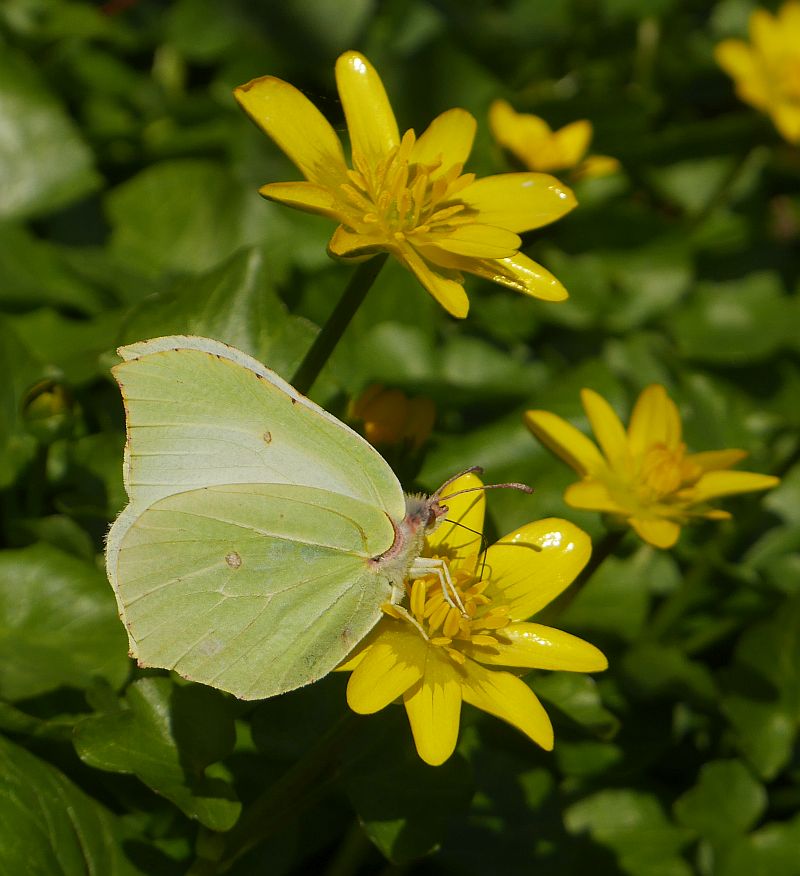
Brimstone moth:

31st May 2020: A second brimstone butterfly turned up, here on Lunaria annua (honesty):
Victory falafels
Falafels can be home grown over most of Norway and if we are serious about climate change should become standar fare in kitchens, restaurants and supermarkets throughout the country. Dig for VICTORY against climate change!
The ingredients:
Broad beans / fava beans (bondebønner); grown in Malvik and stored dried
Victory onion (seiersløk) grows particularly well in the arctic (or replace with garlic or ramsons)
Golpar (spice from ground seed of any member of the Heracleum genus, including invasive Tromsøpalme, Heracleum persicum)
Barley flour (bygg) – I used100% whole grain
Eggs to bind
Fry in oil (sorry, I used imported olive oil)
(Optional: house grown chilis)
Decoration: Oxalis triangularis


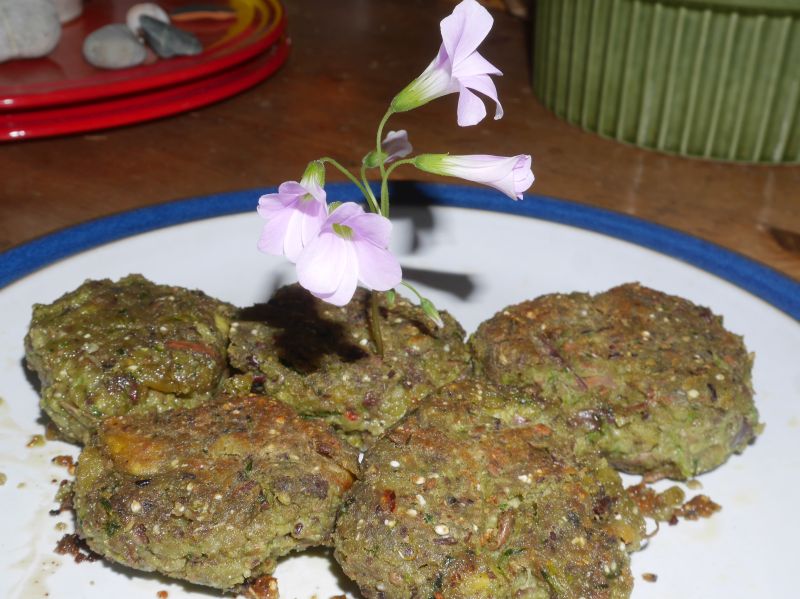
The wild dawn call of the Curlew
Earliness and diversity in Victory Onion
Victory onion or seiersløk (Allium victorialis) in Norwegian has one of the most widespread geographic distributions in the Allium genus from the Pyrenees to the Far East. In Norway, it’s naturalised in the Lofoten Islands, a few places in Nordland county and one location in Hardanger (Granvin). There is evidence to believe that it was originally introduced to Norway by the Vikings. I have plants from different parts of its range in my garden and there is a large difference between them as to when they begin to shoot in the spring, the ones deriving from Japan leafing out a few weeks earlier than the ones from Europe and Norway, although a plant received as Allium ochotense (nowadays considered by most as a synonym of A. victorialis), which originated in the Tromsø botanical garden, is probably from the Russian Far East and is also a late variety. Below are pictures of most of my plants taken on 19th and 20th April 2020. I have about 5 other accessions, two not big enough to photograph, one from the Kola peninsular has not grown well and will be moved to a new location, 3 more were planted this spring. two donated by the Oslo botanical garden and one a variegated form from Japan: Allium victorialis subsp. platyphyllum ‘Chiri Fu’.
1) From a seed trade with Iku Kubota in Japan in 2002.
2) From Tei Kobayashi in Japan in 2016 (subsp. platyphyllum or broad-leaved victory onion) has a flower bud extending
3) From seed from the Reykjavik botanical garden in 2009, originatin from the Sakhalin in the Russian Far East. This one also has a flower bud and has broadish leaves.
4) Received from the Tromsø botanical garden in 2002
5) From Granvin in Norway in 2012
6) From Merete in Lofoten in 2003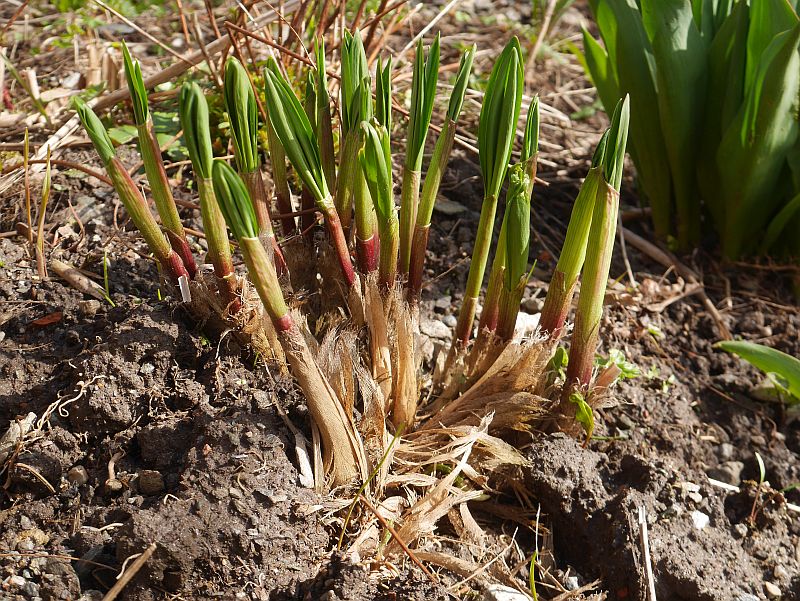
7) From Anja Angelsen. Krogtoft, Vestvågøy, Lofoten, Norway (2009)
8) From Massif Central in the French Alps (kindly sent to me by the Haut-Chitelet alpine garden in 2013) 
9) From naturalised plants in Hopen, Nordland, Norway in 2013 10) Probably Allium victorialis Cantabrica AMH 7827 (collected by Antoine Michael Hoog, the son of one of the founders from Van Tubergen); I received it as Cantabria in 2008.
10) Probably Allium victorialis Cantabrica AMH 7827 (collected by Antoine Michael Hoog, the son of one of the founders from Van Tubergen); I received it as Cantabria in 2008.

